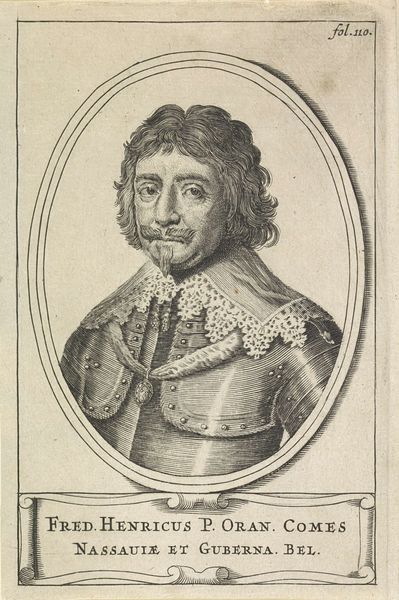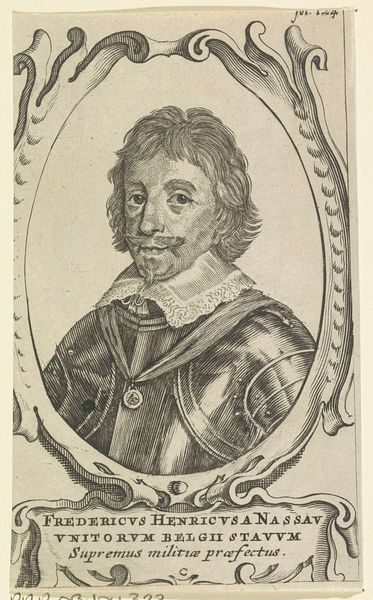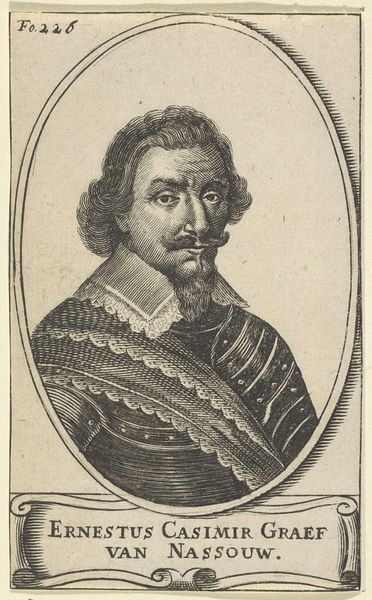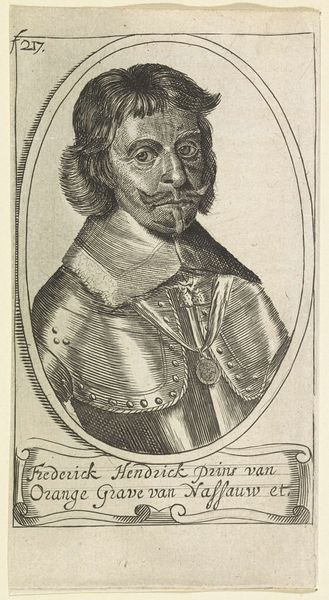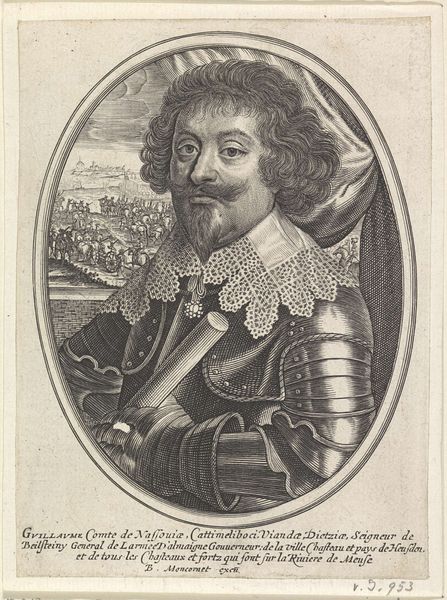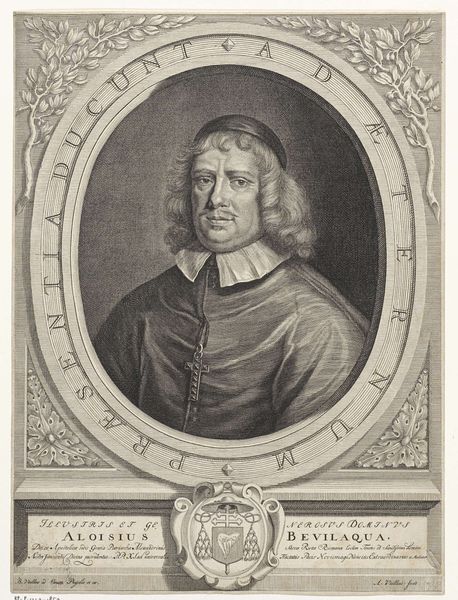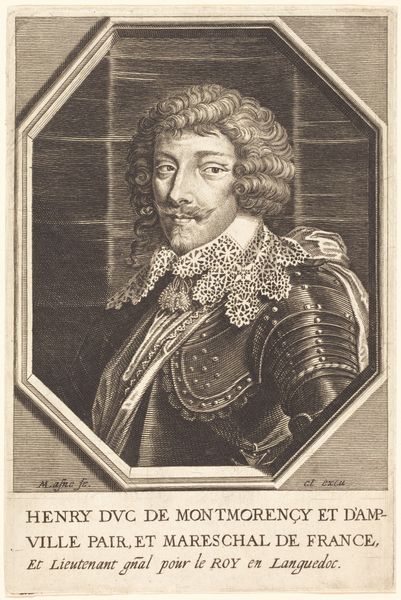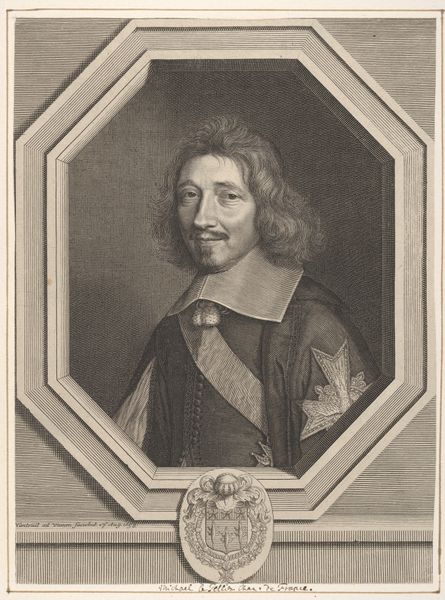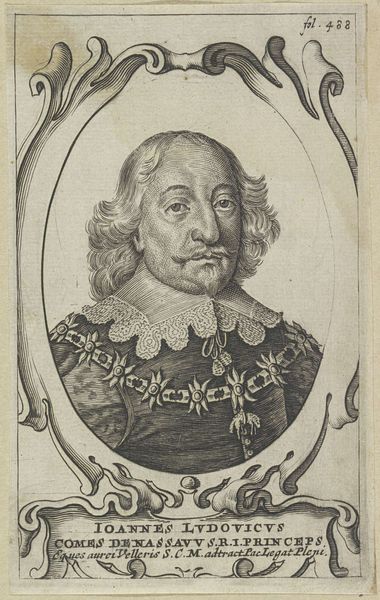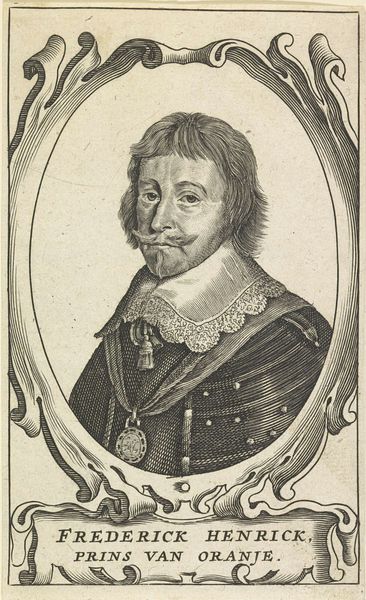
engraving
#
portrait
#
baroque
#
old engraving style
#
caricature
#
pen-ink sketch
#
line
#
history-painting
#
engraving
Dimensions: height 136 mm, width 82 mm
Copyright: Rijks Museum: Open Domain
Editor: Here we have a 17th-century engraving, titled "Portret van Ernst Casimir, graaf van Nassau-Dietz," currently housed in the Rijksmuseum. The stark lines create a rather formal feel, fitting for a portrait. How do you see this piece in relation to its time? Curator: It's important to recognize that engravings like this weren't just about artistic expression, but also about circulating imagery of power. Think of it as early modern propaganda. The meticulous details, such as the lace and the armour, were crucial for conveying Ernst Casimir’s status and authority. Editor: So it's about controlling how he's perceived? Curator: Precisely. Consider the social and political climate of the 17th century. Who was the intended audience for prints like this? Why circulate his image in this particular way? Editor: Possibly allies or those whose support he needed, creating a positive image to sway them. So the art serves a direct political purpose. Curator: Exactly. The portrait becomes a political object, designed to project an image of strength and nobility. Also, this work showcases a distinct style. The lines almost seem inflated into caricature... What is the role of aesthetics here in portraying an effective image of leadership? Editor: It seems like in this era, image was everything in establishing one's presence and command through carefully designed depictions like this one. Thanks! Curator: It was essential to convey power, and the Baroque style, with all its grandeur, became a key tool for that. Thank you!
Comments
No comments
Be the first to comment and join the conversation on the ultimate creative platform.

